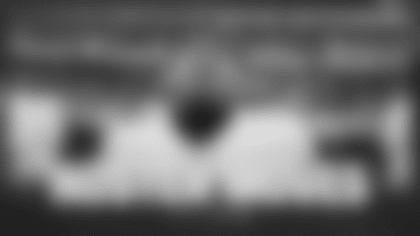The Atlanta Falcons entered Sunday's game with an NFL-low seven sacks through eight games. The New Orleans Saints had allowed just 12 sacks all season, the third-fewest in the league.
Those trends were thoroughly bucked during Atlanta's 26-9 victory in New Orleans.
RELATED CONTENT
The Falcons' pass rush came alive in a way it hasn't in a long time, sacking Drew Brees six times and nearly matching their season total in a single game. Grady Jarrett led the way for Atlanta, earning 2.5 sacks, but Vic Beasley notched 1.5 sacks and De'Vondre Campbell and Adrian Clayborn each recorded a sack of their own.
Those sacks played a large role in the Falcons holding the Saints' offense to 310 yards, many of which came on New Orleans' final drive with the game well in hand.
Atlanta's pass rush got home at critical points of the game. Half of the Falcons' sacks came on third down, and Beasley dropped Brees for a 7-yard loss on a fourth down in the fourth quarter. The Falcons varied their pressures throughout the game, bringing blitzes on some occasions and only rushing three on others, but it was largely the efforts of the defensive line that got Brees on the turf.
Specifically, the Falcons' ability to create pressure up the middle played a big role in the outcome. With Jarrett forcing Brees to slide sideways in the pocket instead of stepping up into it, the other Falcons pass rushers had a clearer path to the quarterback.
Even more impressive than the six sacks was the team they came against. Brees has one of the quickest releases in the NFL, and the Saints' offensive line has rarely given up days like the one the Falcons enjoyed on Sunday.
The last time Brees had been sacked six times was in a 17-13 loss against the Carolina Panthers in 2013. And, according to Pro Football Reference, Sunday marked the first time in the Brees era that the Saints were held under 10 points at home.
Not all of the credit for this performance belongs to the pass rush, however. The Falcons' secondary played tight coverage against the Saints' receivers, often forcing Brees off of his first read and making him go through his route progressions. Without the ability to get the ball out as quickly as he often does, the pass rushers had that extra second to get home.
"The players did a great job, number one, of their communication," Falcons coach Dan Quinn said. "That's really when you see the complementary football come to life, when rush and coverage can be in sync.
"To see that take place tonight I thought, give the credit to the guys. They were really in tune and communicated and really brought the game plan to life. Excellent job by the front and the secondary. Obviously, to get some of the hits and the sacks you've got to have good coverage to go with it."
Sunday's sack outbreak provided a respite in what has been a rough season for Atlanta's pass rush. The team went four straight games without recording a sack, but the Falcons now have eight sacks in their last two games, potentially signaling better days are ahead.
The flow of Sunday's game also made things a bit easier for Atlanta's pass rushers to pin their ears back. With the Falcons building a first-half lead for just the second time this season, the Saints were forced to abandon their run game and become a pass-heavy offense in an attempt to catch up. New Orleans attempted just 11 runs on Sunday, while Brees threw the ball 45 times, the most of any Saints quarterback this season.
Atlanta had been searching all season for a complete effort like the one it displayed in New Orleans, and the Falcons' pass rush provided the spark that led to their most impressive game of 2019.














